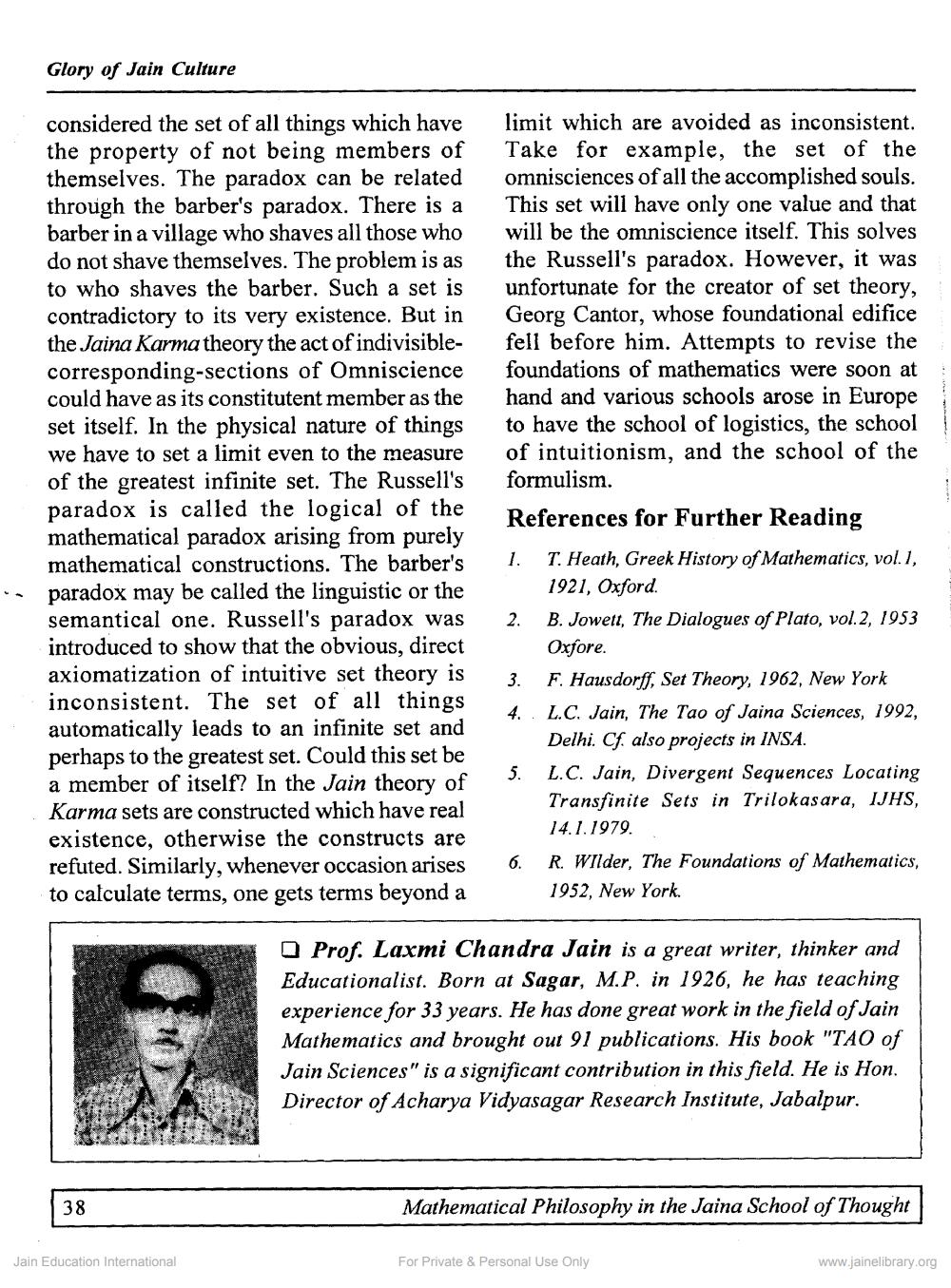Book Title: Mathmetical Philosophy in the jaina School of Thought Author(s): L C Jain, S K Jain Publisher: Z_Sumanmuni_Padmamaharshi_Granth_012027.pdf View full book textPage 4
________________ Glory of Jain Culture considered the set of all things which have the property of not being members of themselves. The paradox can be related through the barber's paradox. There is a barber in a village who shaves all those who do not shave themselves. The problem is as to who shaves the barber. Such a set is contradictory to its very existence. But in the Jaina Karma theory the act of indivisible- corresponding-sections of Omniscience could have as its constitutent member as the set itself. In the physical nature of things we have to set a limit even to the measure of the greatest infinite set. The Russell's paradox is called the logical of the mathematical paradox arising from purely mathematical constructions. The barber's paradox may be called the linguistic or the semantical one. Russell's paradox was introduced to show that the obvious, direct axiomatization of intuitive set theory is inconsistent. The set of all things automatically leads to an infinite set and perhaps to the greatest set. Could this set be a member of itself? In the Jain theory of Karma sets are constructed which have real existence, otherwise the constructs are refuted. Similarly, whenever occasion arises to calculate terms, one gets terms beyond a limit which are avoided as inconsistent. Take for example, the set of the omnisciences of all the accomplished souls. This set will have only one value and that will be the omniscience itself. This solves the Russell's paradox. However, it was unfortunate for the creator of set theory, Georg Cantor, whose foundational edifice fell before him. Attempts to revise the foundations of mathematics were soon at hand and various schools arose in Europe to have the school of logistics, the school of intuitionism, and the school of the formulism. References for Further Reading 1. T. Heath, Greek History of Mathematics, vol. 1, 1921, Oxford 2. B. Jowett, The Dialogues of Plato, vol.2, 1953 Oxfore. 3. E. Hausdorff, Set Theory, 1962, New York 4. L.C. Jain, The Tao of Jaina Sciences, 1992, Delhi: Cf. also projects in INSA. 5. L.C. Jain, Divergent Sequences Locating Transfinite Sets in Trilokasara, IJHS, 14.1.1979. 6. R. Wilder, The Foundations of Mathematics, 1952, New York. BURS Prof. Laxmi Chandra Jain is a great writer, thinker and Educationalist. Born at Sagar, M.P. in 1926, he has teaching experience for 33 years. He has done great work in the field of Jain Mathematics and brought out 91 publications. His book "TAO of Jain Sciences" is a significant contribution in this field. He is Hon. Director of Acharya Vidyasagar Research Institute, Jabalpur. 38 Mathematical Philosophy in the Jaina School of Thought Jain Education International For Private & Personal Use Only www.jainelibrary.orgPage Navigation
1 2 3 4
